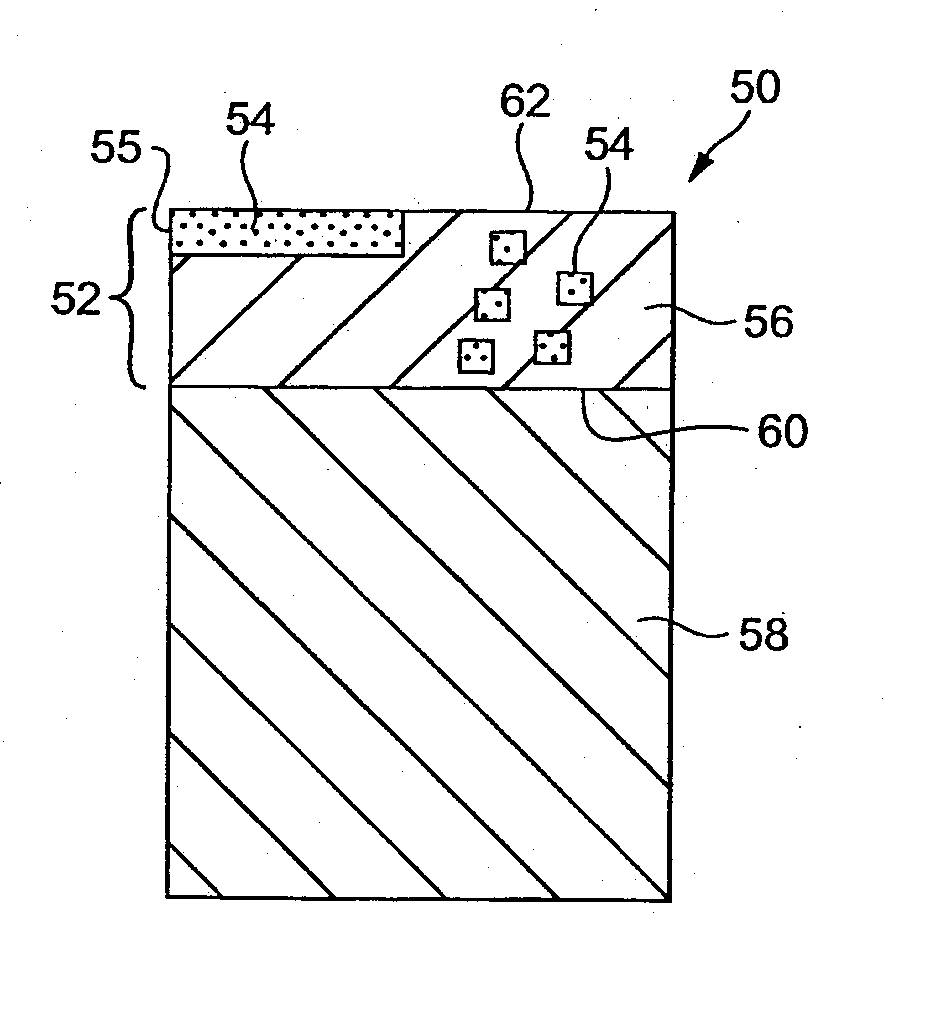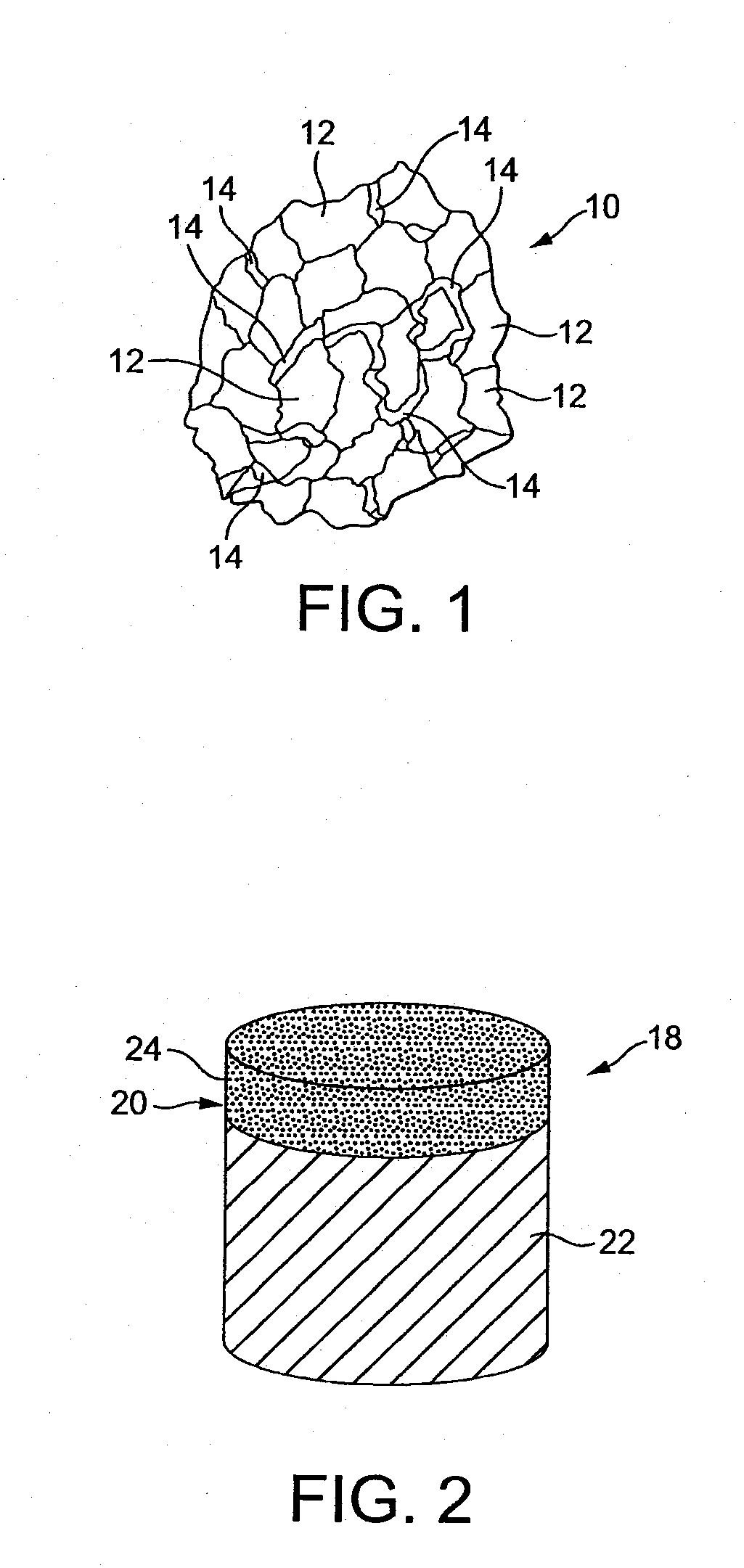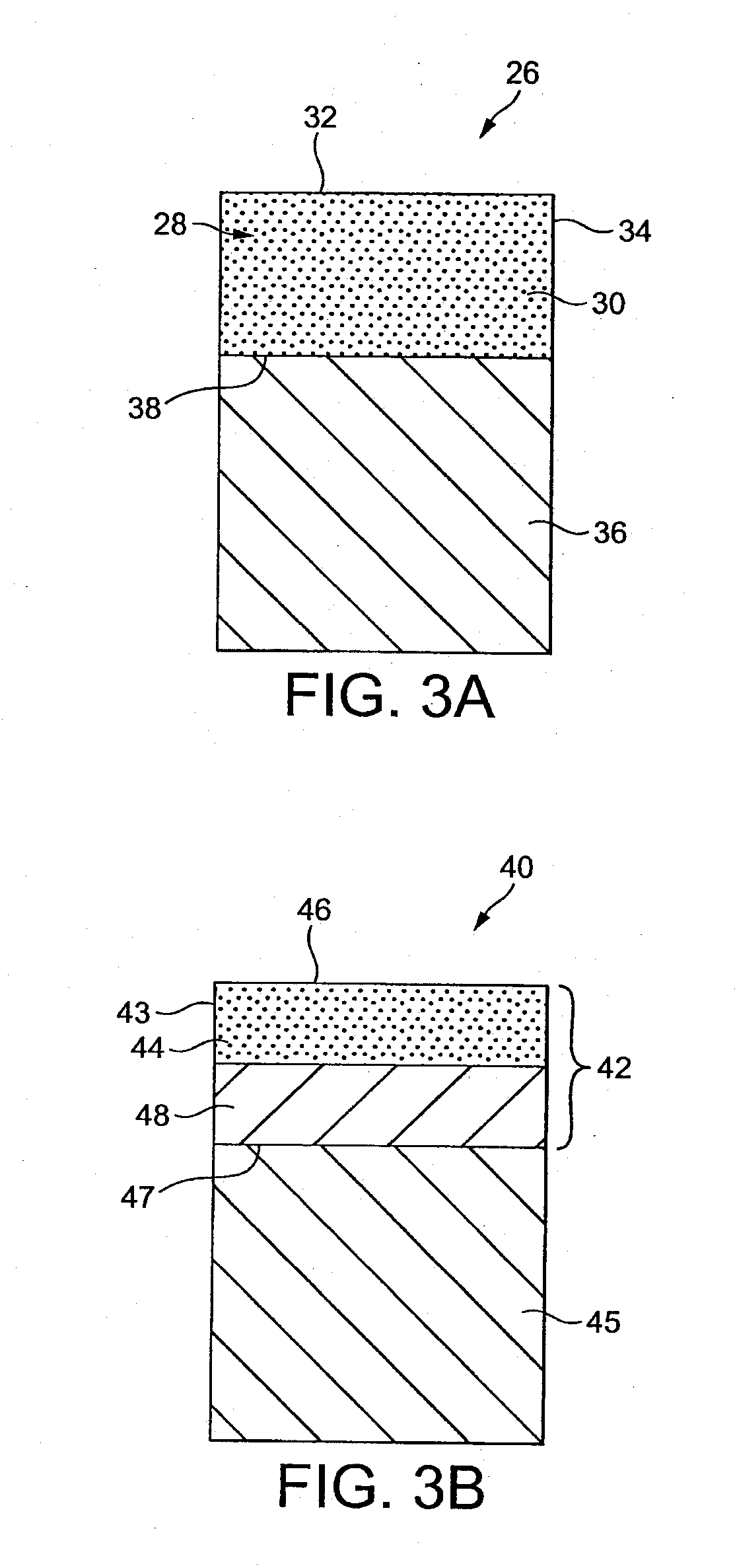Thermally stable ultra-hard polycrystalline materials and compacts
- Summary
- Abstract
- Description
- Claims
- Application Information
AI Technical Summary
Benefits of technology
Problems solved by technology
Method used
Image
Examples
embodiment 26
[0040]FIGS. 3A to 3D illustrate different embodiments of thermally stable ultra-hard polycrystalline compacts constructed in accordance with the principles of this invention. FIG. 3A illustrates a compact embodiment 26 comprising a polycrystalline body 28 that is formed entirely from the thermally stable ultra-hard polycrystalline material 30 according to the HPHT process disclosed above. The body 28 includes a working surface that can extend along the body top surface 32 and / or side surface 34, and is attached to a substrate 36 along an interface surface 38. The interface surface can be planar or nonplanar.
[0041] The body 30 can be attached to the substrate 26 by brazing or welding technique, e.g., by vacuum brazing. Alternatively, the body can be attached to the substrate by combining the body and substrate together, and then subjecting the combined body and substrate to a HPHT process. If needed, an intermediate material can be interposed between the body and the substrate to fac...
embodiment 40
[0042]FIG. 3B illustrates a compact embodiment 40 comprising an ultra-hard polycrystalline body 42 that is only partially formed the thermally stable ultra-hard polycrystalline material 44. The body 42 is attached to a substrate 45, and the body / substrate interface 47 can be planar or nonplanar. In this particular embodiment, the thermally stable ultra-hard polycrystalline material 44 occupies an upper region of the body 42 that extends a depth from a top surface 46 of the body. Alternatively, the thermally stable ultra-hard polycrystalline material 44 can be positioned to occupy a different surface of the body that may or may not be a working surface, e.g., it can be positioned along a sidewall surface 43 of the body. The exact thickness of the region occupied by the thermally stable ultra-hard polycrystalline material 44 in this embodiment is understood to vary depending on the particular end use application, but can extend from about 5 to 3,000 microns.
[0043] The remaining portio...
PUM
| Property | Measurement | Unit |
|---|---|---|
| Temperature | aaaaa | aaaaa |
| Pressure | aaaaa | aaaaa |
| Microstructure | aaaaa | aaaaa |
Abstract
Description
Claims
Application Information
 Login to View More
Login to View More - R&D
- Intellectual Property
- Life Sciences
- Materials
- Tech Scout
- Unparalleled Data Quality
- Higher Quality Content
- 60% Fewer Hallucinations
Browse by: Latest US Patents, China's latest patents, Technical Efficacy Thesaurus, Application Domain, Technology Topic, Popular Technical Reports.
© 2025 PatSnap. All rights reserved.Legal|Privacy policy|Modern Slavery Act Transparency Statement|Sitemap|About US| Contact US: help@patsnap.com



